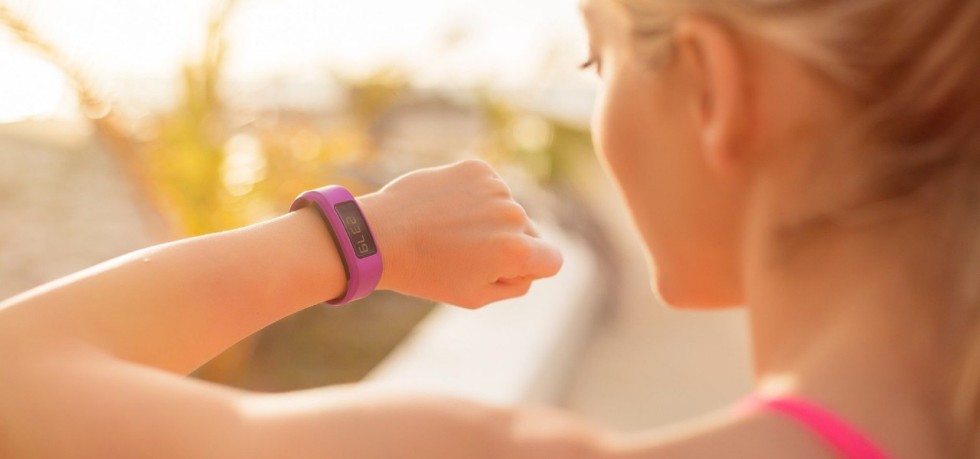
Wearables market
Wearable revenue
With the Apple Smartwatch, wearables came of age. The new segment is shaking up various industries with double-digit growth rates – and enabling new players to benefit from digitalisation.
Urs Binder,
In autumn 2014, Apple introduced its Smartwatch, which had long been the subject of speculation. Some industry observers viewed this as a breakthrough for the wearables product category. Although, calculated across all brands, around 30 million smartwatches were sold in 2015 according to estimations by Gartner, in comparison to this, sales of fitness bracelets, heart rate monitors, chest bands and other activity monitors totalled more than 80 million. According to the Statista statistics portal, two years ago the IDC forecast sales of 65 million of this “wrist wear” for 2015; the thing is, this alone would have been an almost threefold increase compared to 2014. The clear market leader is still FitBit, followed by Xiaomi, Garmin, Samsung and Jawbone.
“By 2020, 35 per cent of the population in developed markets will wear a wearable”
Nick Jones, Gartner
The fashion industry is getting on board
But what Apple’s involvement clearly shows is that the major players in the electronics industry are now also interested in the wearables market. And they are not the only ones. The Fossil Group, famous for fashion brands such as Diesel, Emporio Armani and Michael Kors, sees huge market potential here and, following the “Q” smartwatch, plans to launch more than a hundred wearable products this year. It is clear that wearables have now reached the lifestyle segment, allowing industries that had previously been far removed from technology to benefit from the digitalisation boom.
Market researchers are also forecasting massive growth for the coming year. For 2016, Gartner forecasts sales of almost 275 million wearables, including 116 million Bluetooth headsets and 50,000 cameras worn on the body in the style of the GoPro. Total global revenue is just under 29 billion dollars, of which smartwatches make up 11.5 billion.
The new market research company Idtechex, which specialises in new technologies, is looking a little further into the future and believes that wearables sales will increase to 70 billion dollars per year until 2025. At last year’s Gartner Symposium, analyst Nick Jones estimated that sales would total 500 million devices by 2020. In developed markets, 35 per cent of the population will use at least one wearable.
Incidentally, the statistics vary considerably depending on the source. This is due to the definition of the term “wearable”. Some people understand this to mean fitness trackers and smartwatches, above all, while a broader definition includes all devices that are worn on or close to the body, as well as smart clothing, which is sure to become increasingly important in the future.
Opportunities, pitfalls and innovations
As well as the device providers, other industries are benefitting from the growing wearables market: chip manufacturers, designers, system integrators and OEM manufacturers, testing organisations, software developers, cloud service providers, and telecommunications providers anticipate new business fields and sales.
However, wearables provide new opportunities not only for the familiar players, but also for start-ups with innovative ideas. Jones noted that this market is currently still immature. Projects are often financed through crowdfunding, and some of them soon fail. The industry lacks stable standards – at present, there is a struggle between providers, experience and APIs.
The fashion and jewellery industry sees completely new growth opportunities in the wearables market
Innovation is continuing apace, both in terms of functionality and interaction between the wearables and their wearers. While today’s wearables predominantly communicate via text messages (such as smartwatches) Jones believes that haptic, acoustic and visual indicators will increasingly be used in the future. For example, smart jewellery that indicates incoming messages by changing colour. Operation will increasingly involve microinteractions, such as gesturing and pressing together or shaking.
Health care as an impulse generator
For the foreseeable future, the health care sector will remain the dominant market for wearables. For Idtechex, health care includes medical applications as well as devices and apps for fitness and wellness needs, and they name Apple, Accenture, Adidas, Fujitsu, Philips, Reebok, Samsung, SAP and Roche as key market players.
Existing medical applications range from blood pressure monitors controlled via smartphone to hearing aids with an integrated heart rate monitor, from Bluetooth-compatible blood sugar sensors and the mobile ECG monitor to the smart pill, which provides endoscopic images on its way through the digestive tract. In the future, the range of applications will become much broader; for example, in the area of percutaneous medication: intelligent plasters will measure relevant vital statistics and release precisely the required dose of the medication. Thanks to nanotechnology, sensors and therapeutic actors that act directly inside the body will also be used more and more, thus enabling more precise diagnoses and treatments that are individually tailored to the patient.
Further articles